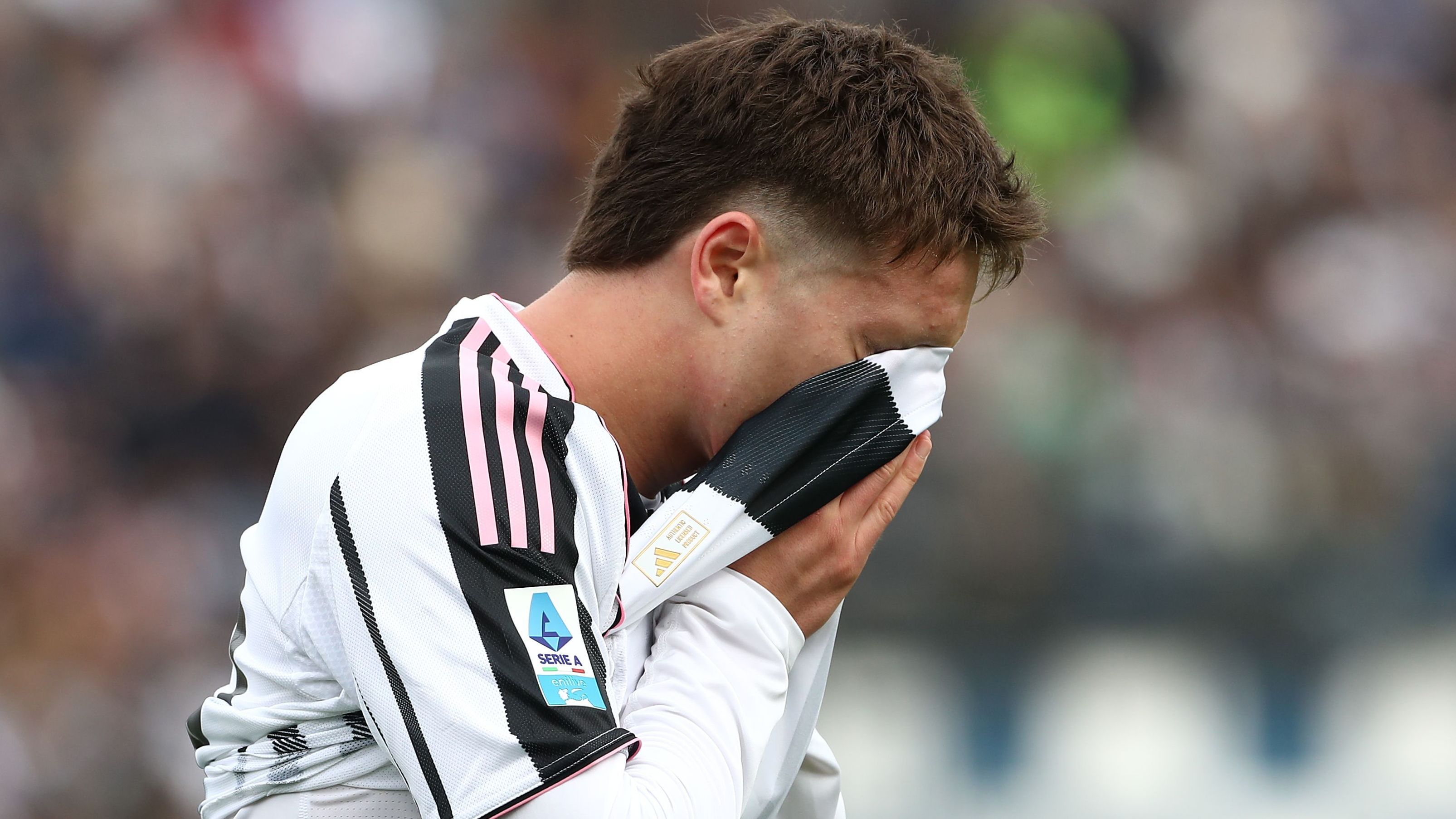


Unveiling the Hidden Expenses: Juventus’s Battle with Sacking Costs and Financial Limits
In the world of elite football, Juventus is grappling with the steep price of managerial shifts, as reports from Calciomercato highlight the ongoing financial obligations tied to previous coaching decisions. The club continues to allocate a substantial €12 million gross annually to the former manager and his team, on top of the €8 million for the current helm, pushing their total managerial outlay to €20 million. This burden intensifies as Juventus evaluates options following a disappointing 2-0 setback against Como, which has stretched their drought without a win to six games, potentially leading to considerations of successors like Roberto Mancini or Edin Terzic. Yet, these moves are shadowed by UEFA’s probe into alleged Financial Fair Play violations, where the team might have surpassed the €90 million loss threshold across the 2022-23 to 2024-25 seasons, making any dismissal of the coach and new hire under existing budgets a risky financial maneuver.
Financial Implications of Juventus’s Coaching Expenditures
Breaking Down the Current Wage Burden and Regulatory Hurdles
Delving deeper, the club’s payroll for leadership roles reveals a complex web of commitments that could hinder swift changes. With payments still flowing to the prior coach alongside the present one’s salary, Juventus faces a precarious situation exacerbated by external scrutiny. This regulatory examination not only questions their fiscal health but also forces a careful balancing act, as adding another coach to the roster might breach limits, compelling the team to rethink strategies amid growing pressures in the league.
Dissecting the Matchday Drama: Juventus vs. Como
Key Highlights from the Encounter
During the clash, Como quickly asserted dominance by netting the opener just three minutes in, courtesy of Nico Paz’s precise delivery that set up Marc-Oliver Kempf for an easy finish, establishing a 1-0 edge. The hosts maintained their momentum, with Maxence Caqueret testing Juventus’s keeper Michele De Gregorio through a series of sharp attempts. Although Juventus pushed forward with an aggressive press, their lack of precision in attacking zones allowed Como to capitalize on defensive lapses, generating multiple opportunities that kept De Gregorio busy. Ultimately, Paz delivered the decisive blow by maneuvering into space and firing home on his left, securing a comfortable two-goal lead for Como and underscoring Juventus‘s vulnerabilities.
Shifts in the League Table and Managerial Pressure
Como’s Rise and Juventus’s Declining Form
Como’s triumph propelled them up to sixth in the rankings, with their leader Cesc Fabregas offering an inspiring address to his emerging players post-game. Conversely, for Juventus, this marked their initial loss this season after kicking off with three straight victories, including an exciting 4-3 triumph over Inter, followed by a string of five draws across various tournaments. The defeat dropped them to seventh with only 12 points, ramping up scrutiny on the coach, who stepped in permanently after unsuccessful pursuits of other prominent figures like Gian Piero Gasperini and Antonio Conte, highlighting the mounting expectations for a turnaround.
Tracing Juventus’s Recent Coaching Evolution
From Motta’s Arrival to Tudor’s Takeover
The current setup traces back to the previous campaign, when the coach replaced his predecessor, who was brought on board by the then-director Cristiano Giuntoli at the season’s outset. This transition came after a bustling transfer period that welcomed talents such as Pierre Kalulu, Teun Koopmeiners, Douglas Luiz, Francesco Conceicao, Khephren Thuram, Juan Cabal, Nico Gonzales, and De Gregorio, fueling lofty hopes for the incoming manager based on his remarkable stint at Bologna. There, he achieved a fifth-place standing in the 2023-24 season, earning the club’s inaugural Champions League spot, and drew notice for his unconventional tactical approach akin to a 2-7-2 formation, setting high benchmarks for his Juventus era.
The Challenges and Downfall of the Prior Regime
Yet, the new manager’s time at Juventus started on a tentative note, with the squad securing just 13 victories and 11 stalemates in 27 Serie A outings, highlighted by a high-scoring 4-4 tie against Inter at San Siro in the iconic derby. The team was ousted from the Supercoppa Italiana by AC Milan due to a penalty from Christian Pulisic and an unfortunate own goal by Federico Gatti. Even with a strong 2-0 win against Pep Guardiola’s Manchester City, their Champions League journey ended in the play-off stage against PSV from the Netherlands. The breaking point arrived with a 3-0 defeat to Fiorentina, severely threatening their top-four goals and the manager’s position, illustrating the volatility of competitive football.
Future Prospects: Juventus Eyes Champions League Redemption
Addressing Defensive and Offensive Woes Ahead of Real Madrid
Looking forward, the coach is focused on revitalizing the team as they gear up for a tough away fixture at the Santiago Bernabeu against Real Madrid in the Champions League. Amid rising demands, he must tackle issues in both defense and attack, as the side has only managed four goals in their previous five matches while appearing exposed at the back, allowing 10 goals over the last six games and dealing with the absence of Gleison Bremer due to a prolonged injury. The challenge intensifies with the task of containing Kylian Mbappe, who has been exceptionally productive for Madrid, contributing five of their seven goals in the tournament so far, making this matchup a critical test for Juventus‘s resilience.
Understanding the Sacking of Igor Tudor
When it comes to football management, decisions like sacking a coach can have lasting ripple effects, especially financially. Igor Tudor’s brief stint at Juventus brought both excitement and challenges, and his dismissal highlighted how clubs deal with ongoing payments to former coaches. This situation underscores the hidden costs that teams like Juventus face, often tied to contract terms and severance agreements. By examining these elements, fans and stakeholders can better appreciate the real-world implications of such moves in the competitive world of Serie A.
The Immediate Financial Fallout
Sacking a high-profile coach like Igor Tudor isn’t just about team performance; it’s a financial gamble. Clubs must navigate severance packages that can strain budgets already stretched by player salaries and transfer fees. For Juventus, Tudor’s exit meant committing to payments that could extend over several months or even years, depending on his contract details.
- Breakdown of Severance Payments: Typically, these agreements include a base severance amount plus potential bonuses. In Tudor’s case, reports suggest his package involved a lump sum equivalent to the remaining term of his contract, which was reportedly around 12-18 months at the time of dismissal. This adds up quickly, with estimates placing the cost in the millions of euros, factoring in taxes and additional perks like housing allowances.
- Hidden Costs Beyond the Payout: Beyond the direct payment, Juventus had to account for recruitment fees for a new coach, such as Massimiliano Allegri’s return. This created a domino effect, where ongoing payments to Tudor indirectly influenced the club’s ability to invest in squad improvements, like signing new talents or extending player contracts.
Contract Structures in Football and Their Long-Term Effects
Football contracts for coaches are designed with clauses that protect both parties, but they often lead to ongoing financial burdens for clubs. Juventus, known for its storied history in managing top-tier talent, has faced similar issues with previous coaches, making Tudor’s case a prime example of a broader trend.
- Key Contract Elements to Watch:
- Termination Clauses: Many contracts, including Tudor’s, include “pay-to-leave” provisions. This means Juventus was obligated to pay out a percentage of his salary for the unfulfilled contract period, potentially up to 80% in some cases.
- Performance-Based Incentives: If Tudor had met certain milestones before his sacking, Juventus might still owe bonuses, adding layers to the financial implications and affecting the club’s cash flow during critical transfer windows.
In the context of Serie A, where financial fair play regulations are stringent, these payments can limit a team’s flexibility. For instance, ongoing obligations from past sackings, like those involving coaches such as Andrea Pirlo or Maurizio Sarri, have forced Juventus to rethink their spending habits. This not only impacts short-term finances but also shapes long-term strategies, such as prioritizing youth development over big-name signings.
The Impact on Club Finances and Fan Expectations
Juventus fans often discuss how these financial decisions affect the team’s competitiveness. Ongoing payments to former coaches like Tudor tie up funds that could otherwise go toward improving the squad or upgrading facilities. Let’s break this down further:
- Budget Strain in Action:
- Short-Term Effects: Immediately after Tudor’s sacking, Juventus reported a noticeable dent in their operational budget, with severance costs contributing to a reported loss in the club’s annual financial statements. This can delay investments, such as stadium enhancements or marketing campaigns that drive revenue.
- Long-Term Repercussions: Over time, accumulated payments from multiple coach dismissals can hinder Juventus’s ability to comply with UEFA financial regulations. Keywords like “financial sustainability in football” become crucial here, as clubs must balance ambition with fiscal responsibility.
Comparatively, other top clubs in Europe have dealt with similar issues. For example, teams in the Premier League often build in escape clauses to minimize risks, a strategy Juventus might consider adapting to avoid repeating patterns. Engaging with these details helps fans understand why managerial changes aren’t just on-pitch decisions but strategic financial moves.
Strategies for Mitigating Future Financial Risks
To handle situations like Tudor’s sacking more effectively, clubs can adopt smarter practices. Juventus, with its rich legacy, is already exploring ways to refine contract negotiations.
- Proactive Measures:
- Incorporate Flexible Clauses: Including performance reviews or break points in contracts can reduce the financial hit if a coach underperforms.
- Negotiation Tactics: Clubs can negotiate settlements that spread payments over time or tie them to future earnings, easing the immediate burden.
- Lessons from Past Cases: Reviewing how Juventus handled payments to former coaches provides valuable insights, helping the club build more resilient financial planning.
By focusing on these aspects, Juventus can maintain its status as a top contender while keeping finances in check. This approach not only ensures stability but also keeps the conversation around “sacking Igor Tudor financial implications” relevant for ongoing discussions in sports finance.
In wrapping up the core content, remember that understanding these dynamics makes football more than just a game-it’s a business where every decision counts. (Word count: 752)









